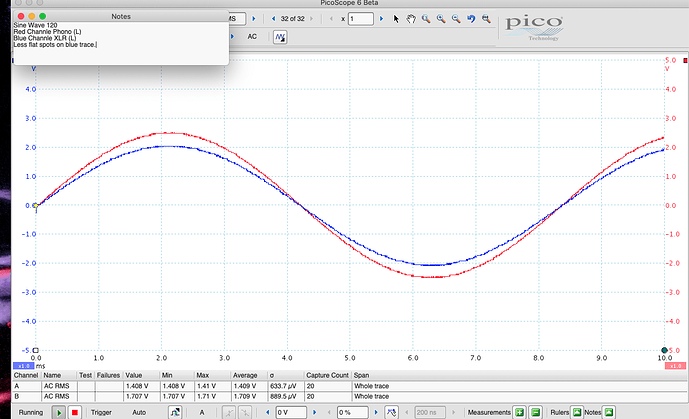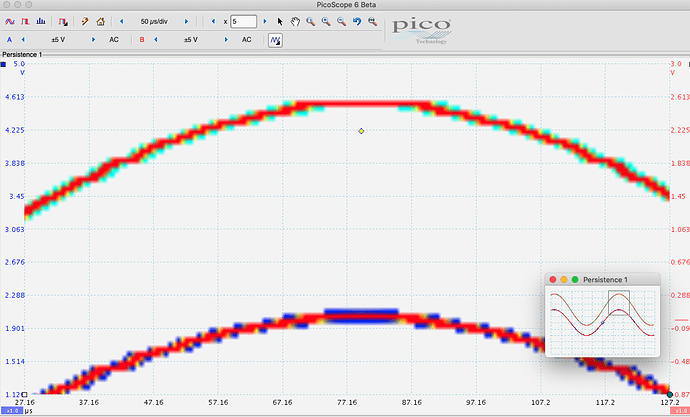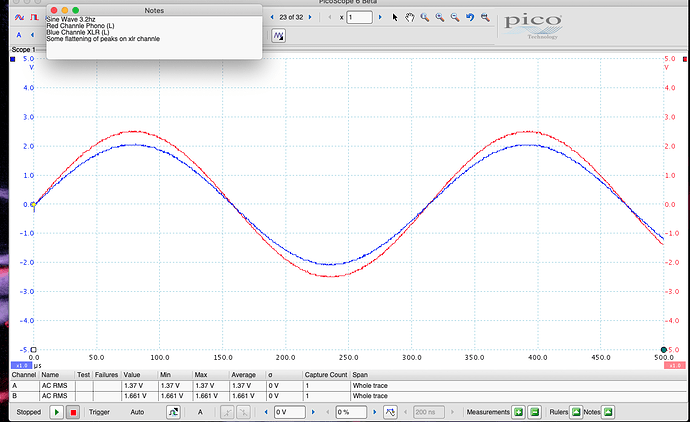Thank you to everyone who has replied - appreciate your time. Would love to know if any other Prime 4 users can test to see if theirs is the same.
What also could do a washy sound - If you for mistake use a DMX cable instead of an normal XLR Cable.
Because DMX has an additional resistor of round about 125 Ohm. This could also lead into washy sound output. Always use normal microphone XLR Cable. If you also do light, then mark your cable from light and sound, and don´t mix them 
edit sorry for my bad english: I don´t mean resistor … I mean resistance (impendance) … the cable itself has a little impendance.
Hi thanks for the reply. It’s definitely microphone cable!
No, the normal DMX cables don’t have any resistor.
A resistor is used for DMX termination, which should be just a connector, not a cable.
Then measure a dmx cable shorted … you will see it has 125 ohm.
And yes, there is also a dmx termination … which also have round about 125 ohm.
Have you ever tried a microphone cable as dmx … if it´s short … no problem … but with longer microphone cables you can´t do dmx anymore. you need 125 ohm cables.
Source: XLR vs. DMX Cables: What's the Difference? | Hosa
What is a DMX Cable?
DMX cables are what we use for lighting. The cables’ purpose isn’t about carrying an audio signal, it’s carrying information or data that will communicate changes between lights and the source. The impedance required for this is 110 ohms.
As a long time light designer I can tell, that I never, ever seen a DMX cable with a resistor build in. Termination is 120 Ohm - resistor between data + and data - pins. Mic cables are with minimum impedance, usually shielded only by grounding mesh. DMX cables - when good quality, should have mesh and foil wrapping around the data cores.
DMX cables are good in passing thru Digital signals, but as You mentioned they are bad for analog and low frequency signals - like audio.
No resistor in the cable … it´s impendance … the cable itself has a resistance. The only resistor you have - is the terminator … there is a resistor between pin 2+3 of 110 ohm … maybe 120-125 ohm. this is only plugged to the last dmx device in the chain.
Yep, exactly that way.
I connected the my amplifier left channel to the XLR output and the right channel to the RCA output.
Then I started a track and listened to the two channels together, or I moved the balance left or right to hear difference: nothing.
I also compared the two channels on the spectrum analyzer (which shows the two channels separately) and also as the level of the various frequency bands I did not notice any difference between XLR and RCA.
I may not have a keen audiophile ear, but honestly I haven’t heard any difference between Prime 4’s XLR and RCA Master output. ![]()
Thanks for trying that DjAj - can I ask a couple of questions: Was this in a bedroom environment or through a club/bar setup? How old is your Prime 4? Mine is nearly 2 years old now, so wondered whether it is an issue that affects models from earlier in the production run?
It is not a bedroom, but I tested it in a room where there is only the audio system.
A year and a half.
I just got myself RCA adapters to track possible improvements. Which titles do you think the difference is best heard? Maybe on one of the Sheffield A2TB test tracks?
I noticed it more with vocals and high frequency high hats, but vocals mainly. It was the high frequencies in the vocals to me that were most noticable
This was where i noticed it too.
Everybody know it’s because Denon Engine OS have a limited high end roll off
That was fixed in one of the previous updates
Just set up for tonight, did another test with xlr vs RCA before I started. RCA definitely smoother and less harsh in the highs than the xlr.
Not perfectly I think, time to make RMA analysis last firmware with the prime 4
Hi had the scope out for another issue, have not noted difference myself yet. But when you look at the waveform
there does appear to be a difference between the XLR output and the phone output levels with blue being XLR above. There is also some flatness on the xlr output. If I was a gambling man I would say Denon, are applying different filtering to the XLR output.As there’s a 4dBu difference in levels between the RCA and XLR outputs, what are you using to attenuate the XLR signal (as both red and blue appear roughly equal on your pics)?



